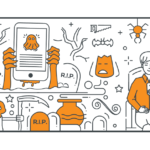
In the wake of Hurricanes Harvey, Irma, Jose, and Marie, it’s important to remember that any one of us could find ourselves in the midst of a natural disaster. It’s also important to remember that while we can’t prevent a natural disaster from happening, we can take preventive measures to minimize the impact on our businesses — and even set ourselves up to better help our valued customers when they’ll need it most.
Here are three things you can do today:
1. Perform a risk assessment: The first step in safeguarding your business from a natural disaster is understanding how it may affect your operations and assets, your employees and customers, and your bottom line. Consider the probability and consequences of potential catastrophic events. How likely is it that a hurricane or tornado will impact your business, for example? And if it did, what troubles might you face before, during and after the event? You may find it helpful to list any scenario you can think of — and to rate its likelihood and associated challenges on a scale of 1-10.
2. Address potential threats: Your risk assessment will likely reveal potential threats to your personnel, facilities, data and more. Perhaps you’d be unable to safely evacuate employees in case of a fire. Now’s the time to create an emergency action plan to ensure their safety. Or perhaps you’d lose access to critical information if your computer equipment was damaged in a flood. In this case, it’s time to institute regular backup protocols or adopt a cloud-based software platform to ensure continuous access to administrative functions. Whatever risks your assessment uncovers, now is the time to create and implement a plan to address them.
3. Plan for business continuity: Maintaining the proper insurance is a must. Confirm that your policy covers any damage that may result from a natural disaster in your area. Also, create a comprehensive inventory of your business assets — including all equipment and serial numbers — and be sure to keep it up to date. (This will ensure that you’re able to recover your assets and get your business up and running as quickly as possible.) Finally, create a business continuity plan that includes employee and customer contact information and protocols; a list of financial institutions and account numbers; backup vendors and suppliers; and procedures for temporary relocation, work processes and payroll. Share this plan with anyone who may need it.
If you’re uncertain whether your own risk assessment is sufficient — or if you simply don’t have the time to perform a comprehensive analysis on your own — consider consulting with your insurance agent or a local business continuity specialist. Doing so will not only give you peace of mind, but it will also go a long way in protecting your business in the event of a natural disaster.
Editor’s Note: Our thoughts are with those affected by Hurricanes Harvey, Irma, Jose, and Marie. It has been both heart-wrenching to see what you are going through and uplifting to witness the courage and generosity that is being expressed every day.
Stay Up to Date on Trends
Get the latest marketing & business tips in your inbox.










